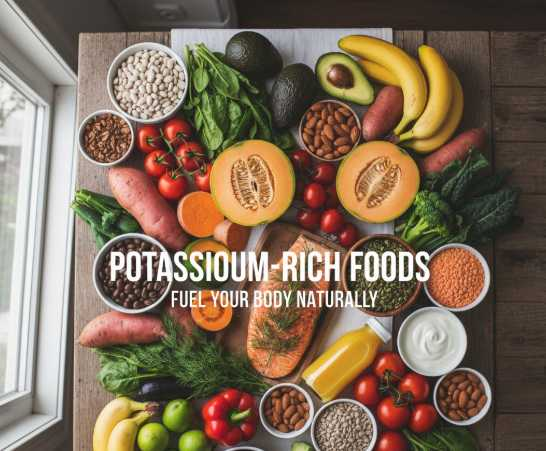Effective financial management is at the core of any successful business operation. Developing robust financial strategies for local enterprises can be pivotal to sustaining growth and navigating economic challenges. It's not merely about balancing the books; it involves making informed decisions that foster long-term success. This article outlines the importance of strategic financial management and provides actionable insights to benefit your business.
The Importance of Strategic Financial Management
Establishing a clear financial strategy is essential for local businesses. It goes beyond traditional accounting practices, integrating a proactive approach to handling resources, investments, and expenditures. A well-defined financial strategy allows businesses to predict future trends, respond to market changes, and allocate resources efficiently.
Using an outsourced finance team can play a significant role in this proactive approach. These teams bring a wealth of expertise and a fresh perspective, enabling local businesses to manage their finances more effectively. By engaging with professionals specialising in financial management, companies can enhance their strategic planning and execution, ultimately leading to better financial health.
Strategic financial management enables businesses to identify their strengths and weaknesses. By analysing financial statements and performance metrics, enterprises can pinpoint areas for improvement. This process is crucial for local businesses aiming to scale their operations or streamline their processes.
For instance, businesses can benefit from conducting a SWOT analysis (Strengths, Weaknesses, Opportunities, Threats) regarding their financial standing. This analysis can unveil insights about their competitive advantage, cost structures, and potential market gaps. Implementing these practices can lead to improved profitability and sustainability. Business owners should actively evaluate their financial strategies, ensuring they align with their long-term goals.
Collaborating with External Experts for Enhanced Insights
Engaging with external accounting professionals can significantly enhance a business’s financial management. These experts offer fresh perspectives and bring specialised knowledge that local enterprises may lack internally. By leveraging their expertise, companies can gain valuable insights into industry best practices, compliance requirements, and emerging financial trends.
For example, an external advisor can assist in identifying cost-saving opportunities or proposing new revenue streams that align with local market dynamics. This collaboration helps optimise current financial practices and develop a forward-looking approach that adapts to changing conditions.
Moreover, external professionals can assist in navigating complex financial regulations that may be intimidating for smaller businesses. Their familiarity with the legalities involved in financial reporting and tax obligations ensures that local enterprises remain compliant while taking full advantage of available incentives.
Incorporating external expertise into your financial planning can also free up resources. Business owners can focus on core operations while ensuring that their financial affairs are in capable hands. Embracing this strategy often leads to enhanced efficiency and better economic outcomes.
Implementing Effective Budgeting Practices
Budgeting is a fundamental aspect of strategic financial management. Local enterprises should adopt comprehensive budgeting practices that reflect their operational goals. A well-structured budget serves as a financial roadmap, guiding day-to-day operations and aiding in long-term planning.
Start by analysing historical data to understand spending patterns and identify areas for improvement. This can involve scrutinising past income statements and expense reports to know where the money is going. Establish realistic revenue projections based on market research and historical performance. This approach prepares businesses for potential downturns and highlights growth opportunities.
In setting up a budget, it’s essential to distinguish between fixed and variable costs. Fixed costs, like rent and salaries, remain constant over time, whereas variable expenses fluctuate based on production or sales volume. By understanding these differences, businesses can better control their expenditures and make informed decisions about where to cut back if necessary.
Regularly reviewing and adjusting the budget is equally important. This flexibility allows businesses to respond quickly to unexpected changes in the market or economic environment. For instance, if a local event or economic downturn impacts sales, being able to adapt the budget can help mitigate losses. By fostering a culture of accountability within the team, every member can contribute to keeping the business on track financially.
Monitoring and Adjusting Financial Strategies
The financial landscape is continually evolving, and local businesses must remain agile. Regular monitoring and adjustment of financial strategies ensure that enterprises are responding to current challenges and preparing for future opportunities.
Consider implementing performance metrics to track financial health over time. Key indicators, such as cash flow, profit margins, and return on investment, provide valuable insights into how well the business performs against its objectives. Monitoring these metrics regularly allows for timely intervention if performance lags, ensuring companies stay aligned with their goals.
Additionally, staying informed about market trends and regulatory changes is vital. Local enterprises that actively seek out information and adapt their strategies accordingly are better positioned to maintain a competitive edge. This proactive stance helps in compliance matters and opens up avenues for innovation.
Creating a feedback loop where financial outcomes inform strategic decisions can also enhance responsiveness. For example, if a particular product line is underperforming, the business can quickly pivot by reallocating resources to more profitable areas. By fostering a culture of continuous improvement, companies can navigate uncertainties more effectively and commit to sustainable growth.
The Role of Technology in Financial Management
Incorporating technology into financial management practices can drive efficiency and accuracy. Modern accounting software provides budgeting, forecasting, and reporting tools, enabling businesses to manage their finances more effectively. These platforms often include features for tracking expenses, managing invoices, and generating financial statements, all accessible in real-time.
Cloud-based accounting solutions allow better collaboration among team members and external advisors. These systems facilitate seamless communication and data sharing, ensuring everyone can access the most up-to-date financial information. This transparency helps maintain accurate records and enhances overall decision-making processes.
Moreover, technology can support automation in financial management. Routine tasks, such as invoicing and expense tracking, can be automated, freeing valuable time for business owners and their teams. This automation reduces human error and ensures financial data is processed quickly and accurately. As a result, businesses can focus on strategic initiatives to drive growth and innovation.
Investing in financial management technologies also positions local enterprises to scale. As the business grows, financial management becomes more complex. Having robust systems in place from the outset can make it easier to handle this growth without losing control over financial operations.
The Significance of Cash Flow Management
Another critical aspect of financial management is cash flow management. Maintaining healthy cash flow ensures that a business can meet its obligations, such as paying suppliers and employees while investing in growth opportunities.
To effectively manage cash flow, businesses should conduct regular cash flow forecasts. These forecasts provide insights into expected inflows and outflows, helping to identify potential shortfalls in advance. Local enterprises can plan accordingly by understanding when cash will come in and when it will be needed.
Additionally, businesses should explore various strategies to improve cash flow. This can include negotiating better payment terms with suppliers, implementing faster invoicing processes, or encouraging customers to pay sooner through discounts. Each of these tactics can contribute to a more stable cash flow, reducing the risk of financial strain.
Having access to alternative financing options can provide a safety net in the event of a cash flow shortage. Local enterprises should consider lines of credit or small business loans as potential resources for bridging gaps when necessary. However, evaluating the terms is crucial to ensuring that borrowed funds are used wisely and repaid promptly.
Local enterprises can create a solid foundation for success by focusing on strategic financial management. With the right approach, businesses enhance their financial stability and empower themselves to seize growth opportunities within their community.




















